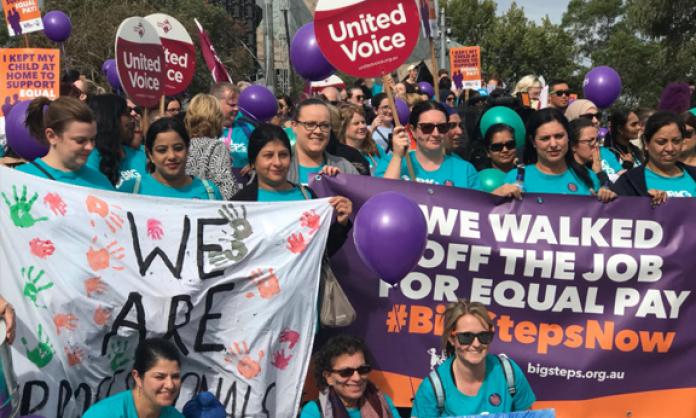It is often argued that the decline in employment in blue collar work, the closure of big factories, the impact of new technologies and privatisation and the growth of “non-standard” work (casualisation, outsourcing etc.) and job insecurity are responsible for falling unionisation rates because the strongholds of unionism have been in decline while the weak areas have been on the rise.
The problem with this argument is that union coverage has fallen in every industry and occupation and every sector of the workforce – among part timers and full timers, among public sector and private sector workers and among permanents and casuals.
Further, much less has changed in the structure of the workforce and industry than is suggested. Many areas of the labour force historically associated with low union coverage have not grown. Self-employment (incorporating independent contractors) and labour hire, for example, are both smaller in their share of the workforce than in 1990, while the share of casual employment has been steady. The proportion of permanent employees in the workforce, more likely to be union members, has grown since 1990.
Despite all the talk of “the death of the lifelong job”, the proportion of people who have been in their jobs for more than 10 years, usually associated with higher union membership, has increased since the early 1980s, while the proportion of employees in their jobs for less than 12 months, who are less likely to be union members, has declined.
Trends in part time work also bear no relationship to union membership. The number of part time jobs rose fastest in the late 1960s and early 1970s – when union membership was surging – and is today growing at a much slower rate, when membership is sinking. Part timing has grown most strongly in those sectors – for example retail trade, accommodation and food services, and among younger workers – where union membership has always been weak.
The gig economy – Uber, Deliveroo, Airtasker etc. – another area associated with low union membership, cannot explain significant declines in unionism either. The number of workers dependent on jobs in this sector for their main income is low, and those sectors where the gig economy has penetrated furthest, for example taxi drivers, food delivery and home handymen/women, historically are non-union.
Far from big workplaces with strong traditions of unionism – car factories and the like – giving way to boutique workplaces, for example small shops, where unionism is rare, big workplaces, such as hospitals, universities, airports, office parks and shopping centres, continue to flourish,
One argument often advanced is that job insecurity and fear of unemployment today make people fearful of joining a union. But these are sometimes exaggerated. Less than 2 percent of the workforce fears that they will involuntarily lose their job within the next 12 months, a figure that has fallen since 2001. Over the past three decades, trends in union membership bear no relationship to trends in unemployment or to the rate of retrenchments.
The shutdowns of the big car factories have resulted in the loss of thousands of unionised jobs, but also, employment in well-unionised education and health care has grown strongly in recent decades. And if entire trades and professions have vanished over the past 30 years, hitting union membership in those areas, others have emerged, most obviously in health care, which can and have in part been unionised.
In summary, the argument that trade unionism has declined because industrial and workforce trends have worked against the union movement does not stack up. The real issue is, if some of the major trends actually point in the opposite direction, to the potential for union membership to grow, why this has not eventuated.
Unions make their own history. For most of Australia’s modern history, permanent full time jobs, which today are called “standard” employment, were far from standard. Trade unions won permanency, regular working hours, apprenticeships and training by going on strike and fighting the bosses, in the process converting industries notorious for casual, low paid, irregular jobs, such as the waterfront, into what became for several decades bastions of good conditions, high pay and trade unionism.
Rather than casualisation and labour hire being responsible for union decline, therefore, it is more the case that the decline of unionism, and in particular the decline in union militancy, has allowed some jobs to be degraded. The task for the unions today is to revive the traditions of militancy that built our movement.











